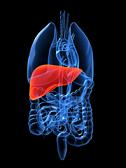Advertisment
WTC Report 2014: Update on worldwide causes of morbidity and mortality in living donor liver transplantation

By Allan M Concejero et al, Kaohsiung Chang Gung Memorial Hospital, Taiwan. Increased use of living donors for liver transplantations has meant an increase in donor complications and deaths; that said, donor morbidity and mortality remains within acceptable limits. Transparent reporting of donor morbidity and mortality is important not only for follow-up purposes and improving outcomes, but also for ethical and legal reasons since the risks to the donor in connection with living donor liver transplantation are real. A team at Taiwan’s leading liver transplant centre have carried out an extensive literature review to provide updated worldwide morbidity and mortality rates; the results of this review were presented by Dr Allan Concejero.
Donor safety is of paramount importance in living donor liver transplantation (LDLT). The risk to the donor must be weighed carefully against the urgency of need and potential benefit to the recipient, as well as any satisfaction the donor may derive from the donation. Transparent reporting of the true donor morbidity and mortality at a centre may pose a dilemma as it may scare off potential donors and attract unwanted media attention and/or litigation. However, there is a world-wide consensus to report donor morbidity and mortality as an ethical, social and legal obligation of all liver transplant centres.
Dr Concejero and the team reviewed data from published studies and reviews, registries including the European Liver Transplant Registry and the United States Organ Procurement and Transplantation Network (OPTN), and other online and printed sources and personal communications to update donor morbidity and mortality rates published in 2006 [1, 2] and 2009 [3-5]. This review showed that by 2013 there had been a total of 21 donor deaths worldwide that were directly related to the hepatectomy operation , compared with 15 deaths reported in 2006 and 19 deaths in 2009 [1-5]. Of the 21 deaths reported in the 2013 update, six had occurred in Europe and seven each in Asia and the Americas; only one death had been reported from Africa. The most common causes of donor death were sepsis (three deaths) and pulmonary embolism (two deaths) (Table 1). A further seven donor deaths had occurred in the 2013 update which were probably unrelated to the operation, compared with six in 2006. The causes of death in these unrelated cases were mainly malignancies or suicide; Dr Concejero pointed out that it is not known to which extent the suicides may be related to the donation.
It is widely known that donation of the right lobe is more likely to lead to complications and death [6-8]; of the 21 donor deaths reported by 2013, 16 were known to have donated the right lobe. It is not uncommon that living liver donors have to undergo rescue liver transplantation due to complications [9].
The findings of Dr Concejero and colleagues concurs with the results of a recently published world-wide survey from Boston which reviewed 11,553 donor hepatectomies in 21 countries and found an overall donor morbidity rate of 24% and a donor mortality rate of 0.2% [10]. The majority of deaths in this survey occurred within 60 days of surgery and all deaths except four were related to the operation. Dr Concejero concluded that although the donor morbidity and mortality rates remained within an acceptable limit, transparent reporting of donor complications and deaths remain an important duty for all transplant centres.
Table 1. Causes of donor deaths (2013).
|
Sepsis |
3 |
Biliary sepsis |
1 |
|
Pulmonary embolism |
2 |
Pancreatitis sepsis |
1 |
|
Myocardial infarction |
1 |
Anaphylactic shock |
1 |
|
Cardiac arrythmia |
1 |
Subarachnoid hemorrhage |
1 |
|
NASH |
1 |
Liver lipodystrophy |
1 |
|
Small remnant |
1 |
Undiagnosed myeloma |
1 |
|
Duodeno-caval fistula |
1 |
Perioperative bleeding |
1 |
|
Gastric gas gangrene |
1 |
Unknown |
3 |
References
1. Trotter, J.F., et al., Documented deaths of hepatic lobe donors for living donor liver transplantation. Liver Transpl, 2006. 12(10): p. 1485-8.
2. Bramstedt, K.A., Living liver donor mortality: where do we stand? Am J Gastroenterol, 2006. 101(4): p. 755-9.
3. Coelho, J.C., et al., Donor complications including the report of one death in right-lobe living-donor liver transplantation. Dig Surg, 2007. 24(3): p. 191-6.
4. Ozkardesler, S., et al., Anesthesia-related complications in living liver donors: the experience from one center and the reporting of one death. Am J Transplant, 2008. 8(10): p. 2106-10.
5. Melloul, E., et al., Living liver donor death related to complications of myeloma. Liver Transpl, 2009. 15(3): p. 326-9.
6. Taketomi, A., et al., Donor risk in adult-to-adult living donor liver transplantation: impact of left lobe graft.Transplantation, 2009. 87(3): p. 445-50.
7. Yi, N.J., et al., Three-quarters of right liver donors experienced postoperative complications. Liver Transpl, 2007. 13(6): p. 797-806.
8. Iida, T., et al., Surgery-related morbidity in living donors for liver transplantation. Transplantation, 2010.89(10): p. 1276-82.
9. Ringe, B., et al., Rescue of a living donor with liver transplantation. Am J Transplant, 2008. 8(7): p. 1557-61.
10. Cheah, Y.L., et al., Incidence of death and potentially life-threatening near-miss events in living donor hepatic lobectomy: a world-wide survey. Liver Transpl, 2013. 19(5): p. 499-506.





